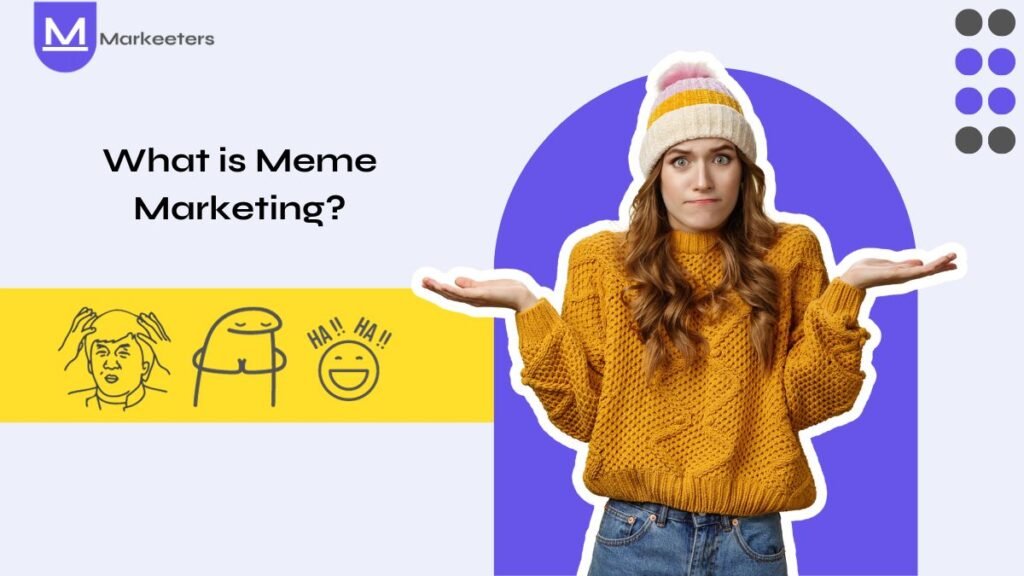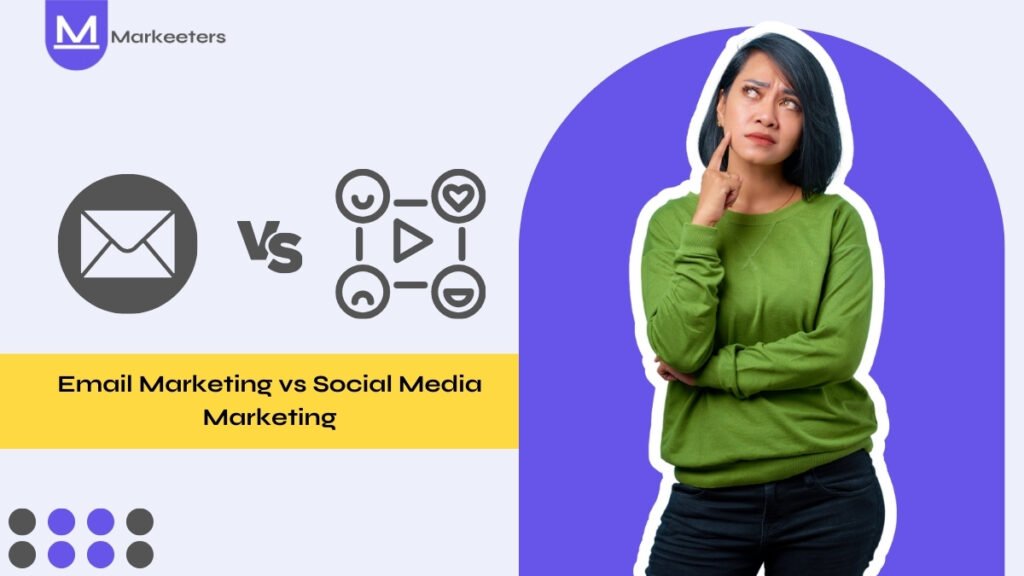What is Emotional Marketing? Learn and transform your marketing approach with emotional resonance.
Did you know that the success rate of emotional marketing campaigns is 31%? In the constantly evolving and unique marketing world, where strategies often compete for attention, one human approach stands out, i.e., Emotional Marketing.
For a brand and business, it is not always about selling your products and services. You would think that it would be over after a sale. But no! Every brand and business has the goal of touching people’s hearts, creating memories, and maintaining long-lasting relationships. For example, when you buy a smartphone or a laptop, you are not only buying a device; you are also buying innovation and creativity. When you go for coffee with your friends, you are not just sipping it; but you are also sharing happiness and creating memories with them.
71% of customers recommend a brand based on their emotional connection to it (Motista). Customers adore it when they believe a business has taken the time to learn about them and understand them. This might take the shape of specially designed marketing tactics or campaigns for them.
“People don’t buy for logical reasons. They buy for emotional reasons.” These wise words from Zig Ziglar describe what sells products and services nowadays. When compared to information that is simply rational, emotional content performs twice as well, at 31% vs. 16%. This is the effectiveness if emotional marketing. Sometimes you get moved by an advertisement, social media post, blog post, or YouTube video. It is emotional marketing. It is a trump card for brands and businesses to make a connection with their audience and establish long-lasting relationships.
Let’s dive in to learn more about what is emotional marketing!
What is Emotional Marketing?
A series of tactics that aim at inducing specific emotions is known as “Emotional Marketing.” In order to help target audiences identify with the brand and to help guide them on their way to purchasing a product or service, these responses can then be properly enhanced. It is the purposeful application of persuading messages that appeal to human emotion in order to establish a strong connection with the audience and produce the desired results.
Most often, it just appeals to one feeling. It can be any human feeling that is powerful enough to influence a decision or motivate action, including fear, anger, joy, and others. With the help of emotional marketing, brands aim to become a constant in people’s lives. They focus on settling down over time and taking action on the most popular trends. They combine collective imagination and current issues to reach their audience. 86% of emotionally engaged consumers expect brands to reciprocate their loyalty beyond loyalty programs (Frog).

Advantages of Emotional Marketing?
Now, that we understand what is emotional marketing, let us further study a few advantages of emotional marketing for brands:
1. Motivates People to Take Action
The first and foremost benefit of emotional marketing is that it motivates people to take action. As a brand, you expect customers to interact with and engage with your products or services. More engagement, more reach. Emotional marketing is an effective tool to motivate customers to buy your products. It also motivates people to interact with your brand and share their experiences with your products or services. This also helps your business and brand grow.
2. Simplest Way to Make a Connection
Emotional marketing increases your probability of connecting with your audience. The more relatable your product or service is, the more easier it becomes to make a connection with your audience. In marketing, it is all about reaching your target audience, converting them into buyers, and maintaining a loyal customer base. Remember Dove’s video ad that hit 70+ million views:
It became one of the most-watched video ads of all time. They appealed to the pain points that women experience. It was powerful and encouraging. The message was so powerful that women automatically shared it with other women, causing it to go viral.
3. Easily Recognizable
Your brand will definitely create an impression if your marketing is successful in invoking emotions. The same emotion will be linked to your product whenever your customers look at it. As human beings, we are all looking for companionship, love, and someone who understands us. When you relate to humans with your products or services, you become easily recognizable. Also, people associate certain feelings with your brand. An excellent example here is: Coca-Cola, Taste The Feeling.
4. Customer Loyalty
Emotions are really strong. The same is true with emotional marketing. It just takes one action to bring out an emotion and have a long-lasting impact. If your marketing activities trigger emotions, it will have a long-term favorable influence on your customers. In this way, they will form an emotional connection with you and continue to be loyal to you.
Different Types of Emotions
As human beings, we share many emotions. Anger, happiness, joy, and fear are a few types. As a brand and business, you can employ a variety of emotions to make a connection with your audience. Let’s study a few types of emotions:

Joy
A large number of customers value things that provide them with moments of joy. As a result, if you want to leverage joy in your initiatives, make a list of things that make your audience happy.
Affection
Emotions such as passion, affection, and love may impact people in unexpected ways.
Fear
Fear is used in marketing to persuade customers to commit to buying a product or service. This is understandable since you would feel some amount of fear before making a purchase. The best real-life example is Term Life Insurance ads and how the companies persuade us to buy this service. Here is a video from Policybazaar:
P.S. Please don’t be scared. We are not selling insurance to Marketers. We do have digital marketing services if you need them for your brand and business. We have expert SEO Marketers, an amazing team of wordsmiths, Growth Marketers, and digital Marketers.
Sadness
Some ads make people sad. This is also an extremely effective emotion to use in marketing. Evoking grief in people encourages them to take action.
Self-Esteem
You may create an effective strategy aimed at helping your prospects feel good about themselves.
Surprise
Surprise is a strong emotion. If you can successfully evoke it, you may be on the way to becoming a trusted name in the industry. Even though surprise is a powerful marketing technique, there is a risk of making your brand less appealing, so proceed with caution.
Anger & Disgust
Anger and disgust are unpleasant emotions. However, if applied correctly in a campaign, they may elicit a good response.
Pride
This sentiment is meant for all shoppers who want to seem smart and feel good about their purchase.
Greed
One of the primary aims of marketers is to delight the consumer. This generally happens when we make them feel like they are receiving more than they are paying for. It is quite natural, and it all comes back to greed.
The Best Emotional Marketing Techniques
1. Understand Your Audience
One of the most important emotional marketing techniques is to understand your audience. Do a little market research to see what elements of your commercial may evoke an emotional response. You can analyze your competitors’ emotional marketing campaigns, determine whether they had any success, and understand what customers relate to. Develop marketing campaigns that are relevant to the anxieties, wants, dreams, or thoughts of potential customers.
2. Storytelling
A story is more memorable than a product description. Telling a tale to which your customers may connect might tempt them to seek out your content on other platforms. For instance, if ABC Company provides services for pet-friendly travel which should include pet-friendly hotels and flights in the itinerary, a customer who enjoys similar hobbies watches a video ad showcasing a dog and his owner traveling, they may go to that company’s social media account to find relatable material. Similarly, individuals might compare the products and services advertised since they have a comparable story.
3. Make a Connection
Love and affection are two emotions that customers seek in their day-to-day lives. A company can humanize itself by imitating this emotion.
Here is an example of an adorable video ad by Tanishq “Little Big Moments”:
Every family who has a daughter could relate to this video ad. A daughter loves to do makeup of her mother and always appreciates her efforts.
4. Inspire your Audience
Advertising that highlights a character’s achievements while convincing the consumer that they can do the same can be a source of inspiration. You must have seen this feature in most athletic advertisements. These campaigns may showcase the challenges that the athletes experienced prior to their triumph. Similarly, businesses should commit to a worthy cause, such as environmental cleaning or fighting for social justice, in order to motivate their customers to think about their brand and become engaged themselves.
Here is an example of an inspirational video ad by Vivo India: #vivoforeducation
5. Leverage Different Colors
Colors play a crucial role in evoking a response from customers. Using various colors for different purposes might influence how people feel about specific brands. For instance, green is associated with health and environmental consciousness, while red may evoke feelings such as enthusiasm and passion. You can further combine color with location, clothing, or unique items in your ads.
6. Be Authentic
If you can give an emotional appeal to your ad, you have the audience’s attention. However, creating a strong emotional response may not be effective if the video’s content does not complement your brand’s values. Getting more prospects should not come at the expense of seeming unethical or inauthentic.
How do you Measure Emotional Marketing?
You cannot grow without measuring your marketing efforts. If you don’t analyze and monitor your metrics, you won’t be able to make changes in your marketing strategies to reach your audience. Therefore, it is important to measure your marketing initiatives.
Emotional marketing is measured in the same way as any other marketing campaign, with the exception that you are evaluating the emotional response itself. If you want to know how your audience is responding to your ads other than click-through, subscription, or purchase, you may need to do some manual research.
Consider doing reviews or allowing for comments throughout your underlying effort to better understand your community response. This open-ended technique will allow for valid, consistent community reactions while also providing suggestions for where you may improve.
Some Amazing Examples for You
1. P&G “Thank You, Mom- Strong”
P&G designed a sentimental commercial for the 2016 Rio Olympics that highlighted the impact of mothers in our lives. In this video, Olympic competitors recall how their mothers supported and comforted them as youngsters, giving them the confidence to compete in the Olympics.
P&G is a company that spans a wide range of products all aimed at the house, so doing a little emotional branding on the home element was a strong move as many people sit down to watch their advertisements.
2. Coca-Cola “Choose Happiness”
Many brands and businesses prefer their customers to relate their brand names with happiness, laughter and smiles. As per this research, The New York Times most-shared pieces of content were uplifting and had emotional appeal. Remember that positive advertising might help you achieve more engagement.
This ad was an effective example of Coca-Cola that inspired customers to share good memories and activities that made them joyful that summer.
3. Google’s Search: Reunion
Google’s Search Stories is a collection of films in which people utilize Google services to enhance their lives or find solutions to their problems.
With the help of Google Maps, a helicopter rescue crew was able to save a complete family in this video.
Conclusion
In this blog, we have learned what is emotional advertising, a few techniques to use, and amazing examples. The key takeaways include:
- Emotional marketing is the purposeful use of persuasive messages that appeal to human emotions in order to connect with the audience and achieve the intended results.
- If your marketing strategy strives to evoke emotions, it will undoubtedly make an impression.
- There is a wonderful sense of accomplishment in providing a quality product and conveying a powerful message to its customers.
- Understanding your audience is essential in emotional marketing; therefore, conduct in-depth market research on what could trigger an emotional response in your ads.
- Colors can elicit emotional reactions in humans. Using various colors for different purposes might influence how people feel about specific items and businesses.
We hope that this blog inspired you to include an emotional marketing strategy and create unique memories for your customers. In emotional marketing, thinking outside the box is far more crucial than having a big budget. This is the right time!
Frequently Asked Question
What is the emotional need in marketing?
Emotions in marketing add significance and depth to a brand’s products or services. They form a relationship between a brand and people. If nurtured regularly, this may lead to a long-term association. Brands hope to get ingrained in people’s lives through emotional marketing.
How do you do emotional marketing?
– Be authentic
– Add a surprise element
– Know your audience
– Include storytelling
– Be responsive
– Engage with your audience
– Add some creative elements
When did Emotional marketing begin?
Marc Gobé explored the concept of “emotional branding” in his 2001 book Emotional Branding: The New Paradigm for Connecting Brands to People. Gobé developed the notion in response to his observation that there may be an emotional connection in a consumer-brand relationship.
What is the disadvantage of emotional marketing?
When used incorrectly, emotional appeals can drive customers away rather than pull them in. You must be extremely specific about how each piece of the ad will make the buyer feel. A viewer is less likely to acquire a product if an ad evokes feelings of rage or remorse.





